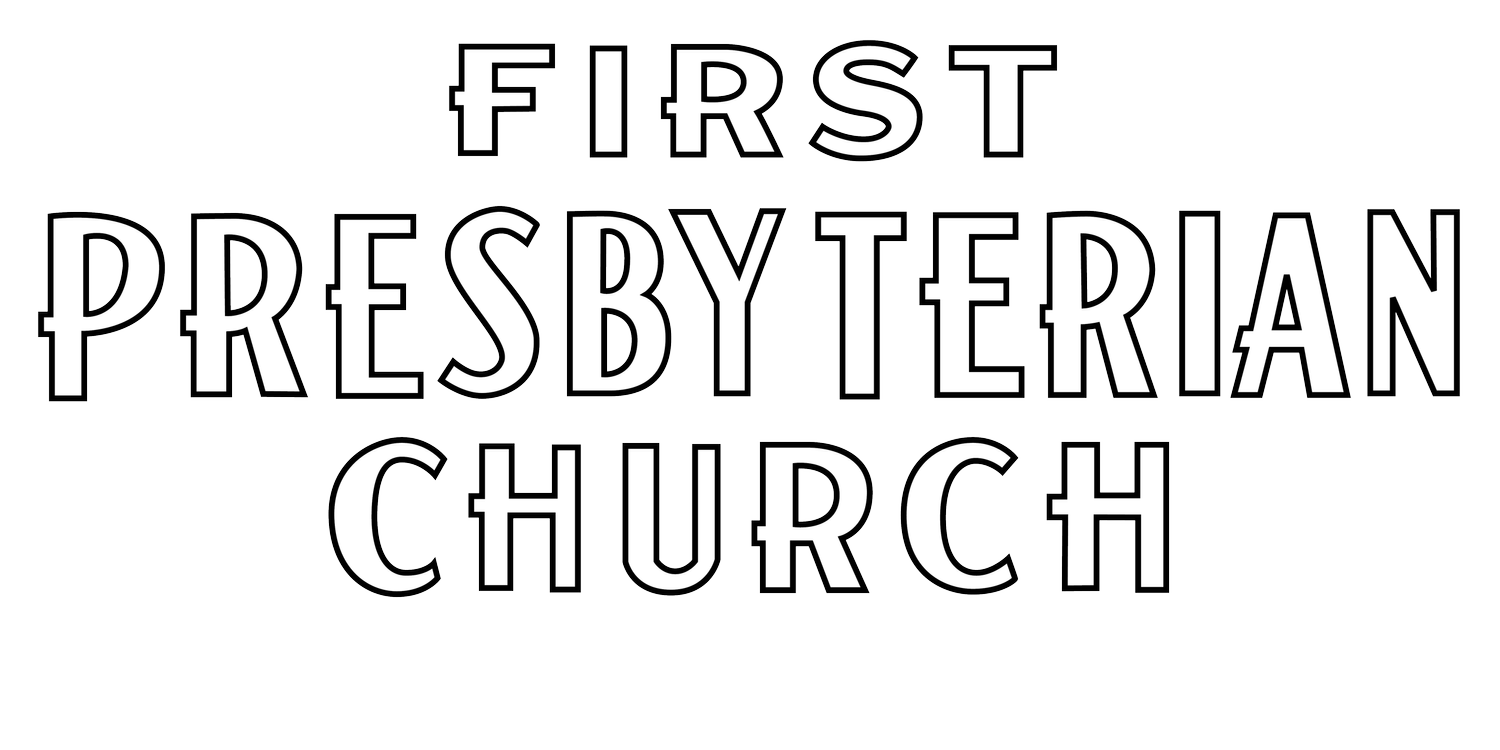
COMMUNION FOR FAMILIES
Dear FPC families with children,
Our tradition holds our two sacraments of baptism and communion in high esteem. We see them as tangible signs of God’s invisible grace. Baptism is a “one time sign and seal” of our inclusion into God’s covenant people. Communion is the “as many times as desired sign and seal” of that grace. In keeping with our emphasis on grace, there is no minimum age in our tradition for baptism or for communion. Both these sacraments are all about God’s initiative.
At FPC we have chosen to emphasize hospitality at our table and allow those who have not been baptized to participate as long as they have an understanding and relationship with Jesus. We have designed the yearly communion training to be a helpful introduction to this incredible mystery, and we pray it will help all of us be more prepared to receive more grace. No one has to attend communion training in order to participate.
Children are valued as integral to our worshipping community. For this reason, we bring our upper elementary Godly Play classes to join their parents during communion, beginning in October through the end of the school year. Parents of younger children are welcome to gather them from their Godly play classes to join the congregation for communion. Otherwise the younger children will remain in their Godly play classes during communion. As your pastor, it is a privilege to be part of this vital sacrament in the life of our church.
—Pastor Doug
What Your Child May Be Able
To Understand About Communion:
-
As parents and caregivers meet the infant’s needs by soothing, washing, swaddling and feeding them, they build trust. The Lord’s Supper is an expression of God’s trustworthiness.
-
Toddlers explore their environment through touch and taste. Their language skills are also blossoming: they are naming things and beginning to understand the arc of story. Take time to name the elements of communion – the bread and the cup. Toddlers understand giving and receiving. Tell them the story of how Jesus shared a special meal with His friends and how He shares this meal with us.
-
Preschoolers grasp the arc of story, enjoy ritual or routine and have a keen sense of mystery. Read or tell them the story of Jesus and the Last Supper. Talk to them about the ritual (or order) surrounding the practice of communion. Allow them to observe adults partaking. Give them bread and juice and a table to “play” communion, allowing them to break the bread, pour the juice and receive.
-
Since children at this age are beginning to identify with friends or groups, they may begin to understand that communion gives us a sense of belonging to Jesus and His people. Because of their more concrete understanding of time, they may also understand the historical context of the Lord’s Supper and Jesus’ command “do this in remembrance of me.”
-
Older children are beginning to develop abstract thinking and therefore, may be ready to explore the symbolism in the Lord’s Supper. They can appreciate the inter-connectedness of things and people and may grasp the big picture of communion and their place in it.
Suggested Ideas for Teaching
Your Child About Communion:
Children as young as 3 years old, can hear and learn the story of Jesus’ death and resurrection. They have a natural empathy that will allow them to care for Jesus and begin to grasp His sacrificial love. Explain that in communion we remember that Jesus died because He loves us and that He is alive and with us as we gather together in His name.
Read to them or tell them the story of The Last Supper (Matt 26:17-30, Mark 14:22-26, Luke 22:14-20). Ask them the “wondering” questions from Godly Play: – I wonder what part of this story do you like best? – I wonder what part of this story is most important? – I wonder if we could take anything out of this story and still have everything we need? – I wonder where you are in this story?
Enjoy family meals together around the table. Encourage children to serve one another at the table. Express gratitude – to God, to one another. We share in the Lord’s Supper because we belong to Jesus and to each other.
Ask them to tell you about the feast during Godly Play. Ask them, “I wonder if you have ever seen a feast happen in the sanctuary?”
Ask them what they notice about communion at church. Try to remember the order of service and elements of communion together
Read the “words of institution” (below) together with your children. Notice what Jesus says about the bread and the cup. Talk to them about the connection Jesus made between the bread and “His body, given for us”, and the cup and “His blood, poured out for us.” Talk about how taking part in communion mysteriously draws us into Jesus’ saving sacrifice for us through His death and resurrection.
From the Book of Common Worship: See I Corinthians 11:23-26; Luke 22:19-20 Hear the words of institution Of the Holy Supper of our Lord Jesus Christ:
The Lord Jesus, on the night of His arrest, took bread, And after giving thanks to God, He broke it, and gave it to his disciples, saying: Take, eat. This is My body, given for you. Do this in remembrance of Me.
In the same way He took the cup, saying: This cup is the new covenant sealed in My blood, Shed for you for the forgiveness of sins. Whenever you drink it, Do this in remembrance of Me.
Every time you eat this bread and drink this cup, You proclaim the saving death of the risen Lord, Until He comes.
With thanksgiving, Let us offer God our grateful praise.

